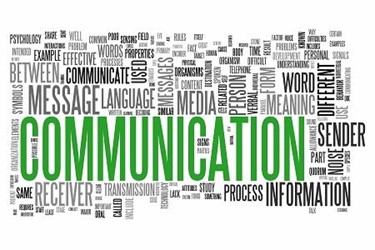The Lost Generation: Meeting The Communication Needs Of Baby Boomers
By Jim Higgins

It’s been said before; the millennials want more technology in their healthcare. Millennials want to be able to text their doctor, and millennials are driving expectations for healthcare. But what about everybody else? Are millennials the only ones healthcare providers should cater to?
With so much focus on pleasing the up-and-coming millennial generation, baby boomers (patients age 52 to 70) are sometimes overlooked. Research shows baby boomers consume the largest amount of healthcare services in the U.S., yet somehow, they get lost in the shuffle with healthcare providers working hard to meet the demands of millennials. This group spends three times more than the average working-age person, and they aren’t afraid to switch providers if their current doctors aren’t meeting their expectations. In fact, 25 percent of baby boomer patients have switched providers in the past two years, and 20 percent are likely to switch in the coming two years. If healthcare facilities don’t want to risk the financial loss tied to such a big group of patients, they are going to have to meet the baby boomer generation where they are, and put some stock into their wants and needs.
Give Them A Choice
One of the biggest opportunities healthcare practices have to increase the satisfaction and retention of patients is increasing the amount of technology used in their daily procedures. Options like online services and texting are things a large percent of patients, across all generations, want from their healthcare provider. A large majority of millennials and even Generation X patients would like to receive text messages from their doctors, and about half of baby boomers feel these texts and emails are convenient too.
You may have boomer patients who also still want a phone call though, but balancing the preferences of different generations doesn’t have to be difficult. And once you get the ball rolling, communicating with patients based on their preferences can really enhance collaboration and engagement. It can also open up conversations about other ways to communicate like real-time, two-way text messaging.
It starts with automating patient communication with software so you can reach each patient in the way they prefer. Patients can choose how they would like to receive messages from their provider. Whether they choose texts, emails, or an old-fashioned phone call, the practice can record their preference in the software. When it comes time to send an appointment reminder or recare message, the practice doesn’t have to remember which patients prefer a phone call and who would welcome a text, the software automatically contacts each patient according to their preference. With minimal time from the practice, patients are reached in the way they prefer.
Build A Connection
While patients prefer their interactions with healthcare providers to be easy and convenient, they still want to feel a personal connection with the doctor and his staff. Nobody wants to feel like a task to check off or a number in the books, they want a doctor who cares about them as a person. When the term automated messaging is heard, many doctors fear they will lose the personal connection they have with patients, which will result in patients choosing another provider. But automated messages can be just as personal as the manual messages many practices still send. The only difference is they are quicker and more reliable.
Automated messages, whether they are texts, emails, or even phone calls can be personalized for millennials, baby boomers, and everyone in between. Patient communication software integrates with the practice management software so the automated appointment reminders or recare messages contain a patient’s name, appointment time, office address, and the ability to confirm the appointment. Automated phone call reminders can even include a pre-recorded message, so baby boomers who choose a phone call hear the familiar voice of the doctor or a member of his staff instead of a robotic, monotone recording.
Contacting patients manually requires staff to look up each patient’s preferences and other information, and then send a text or email, or make a phone call to convey the message. With communication software, every patient gets every message in the way they want to be reached, without practice staff spending hours on the phone. It also ensures nobody slips through the cracks or gets missed. And letting patients choose how they want to hear from their provider not only makes the communication feel more personal, but increases the likelihood they will get the message.
Real-time text messaging takes personalization and convenience even further. For those patients who are ready to communicate with their provider that way to communicate with everyone else, this is a game changer. It allows instant, personal collaboration. Patient can ask simple questions like “can you give me directions” or more complex questions like “my daughter has a fever can you get her in today?”
Accommodating the wants of the technically-advanced millennial patients doesn’t have to be done at the expense of the baby boomer generation. Patient communication software makes it not only possible, but easy to give every patient a choice in the way they receive communications from their provider, and personalize each message. It’s a win-win situation for everybody, including the practice staff that can save hours every week by not manually contacting each patient. When patients of all generations feel like their wants are being heard, they are more satisfied with their provider, and more willing to return to the practice.
